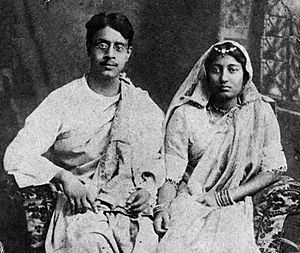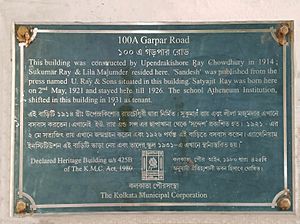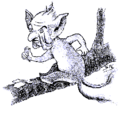Sukumar Ray facts for kids
Quick facts for kids
Sukumar Ray
|
|
|---|---|
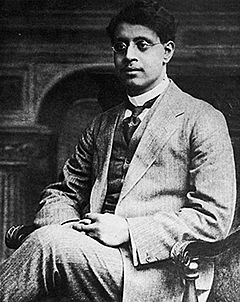 |
|
| Born | Sukumar Ray 30 October 1887 Kishoreganj, Bengal Presidency, British India (now in Bangladesh) |
| Died | 10 September 1923 (aged 35) Calcutta, India |
| Occupation | Writer, poet |
| Language | Bengali |
| Alma mater | Presidency University, Kolkata London College of Communication |
| Period | Bengal Renaissance |
| Notable works | Abol Tabol, Pagla Dashu, HaJaBaRaLa |
| Spouse | Suprabha Devi |
| Children | Satyajit Ray (son) |
| Parents | Upendrakishore Ray (father) |
| Relatives | Dwarkanath Ganguly Kadambini Ganguly |
Sukumar Ray (Bengali: সুকুমার রায়; 30 October 1887 – 10 September 1923) was a talented writer and poet from Bengal, India. He is most famous for his funny stories and poems written especially for children. Sukumar Ray was the son of Upendrakishore Ray, who was also a well-known children's writer. He was also the father of the famous filmmaker Satyajit Ray and the grandfather of filmmaker Sandip Ray.
Contents
Growing Up in Bengal
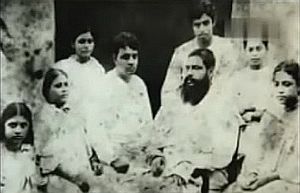
Sukumar Ray was born in Calcutta, India, on 30 October 1887. His family originally came from a village called Masua, which is now in Bangladesh. Sukumar's father, Upendrakishore Ray, was a very creative person. He was a famous Bengali writer, painter, musician, and even an early technologist. Sukumar's mother was Bidhumukhi Devi.
Sukumar grew up during a special time in Bengal, known as the Bengal Renaissance. This was a period when many new ideas in art, literature, and science were developing. His home was full of creativity. His father was not only a writer and artist but also a close friend of Rabindranath Tagore, a very famous poet. Other family friends included important scientists like Jagadish Chandra Bose.
Upendrakishore was also interested in printing technology. He started a business called M/s U. Ray & Sons, where Sukumar and his younger brother Subinay also worked. Sukumar's sister, Shukhalata Rao, became a social worker and wrote books for children too.
Education and Career
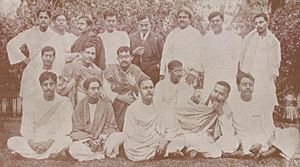
Front row (sitting from left): Subinoy Ray, Prasanta Chandra Mahalanobis, Atul Prasad Sen, Shishir Kumar Datta, Sukumar Ray.
Middle row (from left): Jatindranath Mukhopadhyay, Amal Home, Suniti Kumar Chattopadhyay, Jibanmoy Roy.
Standing (from left): Hiran Sanyal, Ajit Kumar Chakrabarty, Kalidas Nag, Pravat Chandra Gangoadhyay, Dr. Dwijendranath Maitra, Satish Chandra Chattopadhyay, Shrish Chandra Sen, Girija Shankar Roy Choudhury.
In 1906, Sukumar Ray finished his studies at Presidency College in Kolkata. He earned degrees in both Physics and Chemistry. Before that, he went to City College School, where his classmate inspired the funny character "Pagla Dashu" from his stories.
Sukumar also traveled to England to learn about photography and printing. He studied at the School of Photo-Engraving and Lithography. He became a pioneer in photography and lithography (a type of printing) in India. While in England, he even gave talks about Rabindranath Tagore's songs before Tagore won the Nobel Prize.
Sukumar was also a talented illustrator. He developed new ways to make halftone blocks, which are used for printing pictures. He even wrote articles about these techniques for journals in England. In 1912, he joined the Royal Photographic Society and remained a member until he passed away.
Running the Family Business
Sukumar's father, Upendrakishore, started a publishing company called U. Ray and Sons. Sukumar and his brother Subinay helped run it. Upendrakishore also started a children's magazine called Sandesh in May 1913.
After Sukumar returned from England, his stories and drawings quickly appeared in Sandesh. When his father passed away in 1915, Sukumar took over the printing and publishing businesses, including Sandesh. He ran the magazine for about eight years, with help from his younger brother and other family members who also wrote for it.
His Amazing Books
Sukumar Ray created a special kind of literature filled with pure nonsense and silly fun. His work is often compared to Lewis Carroll's Alice in Wonderland. He had a fantastic sense of humor and a sharp way of observing things. He used words in a very clever way to create humor that both children and adults could enjoy.
After his father's death in 1915, Sukumar's creativity truly shined. His book of 45 limericks, Abol Tabol, and many other works published in Sandesh still make readers of all ages laugh. He invented many unforgettable characters in his stories and poems. Characters like Kaath Buro, Tash Goru, Huko Mukho Hangla, and Kumro Potash were made-up, but they felt very real and funny. He called his works the product of Kheyal Ros, which means a sudden wish or a playful fancy.
Later Life and Legacy
Sukumar Ray passed away on 10 September 1923, at his home in Kolkata. He had a severe infectious fever called leishmaniasis, which had no cure at that time. He left behind his wife and his only child, Satyajit, who was just two years old. Years later, in 1987, Satyajit Ray made a documentary film about his father, Sukumar Ray.
Notable Works
- Abol Tabol (The Weird and the Absurd)
- Pagla Dashu (Crazy Dashu)
- Khai-Khai (Eat-Eat)
- Heshoram Hushiyarer Diary (The diary of Heshoram Hushiyar) (an early funny science fiction story)
- HaJaBaRaLa (Mumbo-Jumbo)
- Jhalapala O Onanyo Natok (Cacophony and Other Plays)
- Abak Jalpan (Weird Drinking of Water)
- Bhasar Atyachar (Torture of Language)
Images for kids


